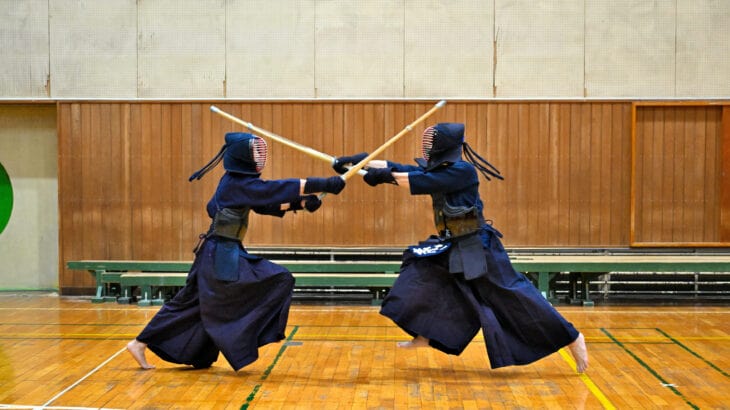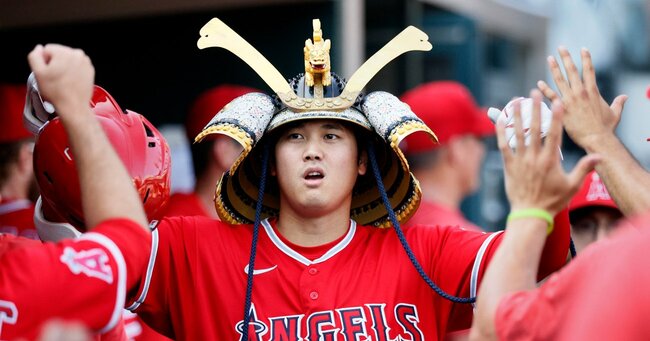
Kendo is one of Japan’s traditional martial arts and has a long history.
However, the rules of Kendo are difficult for beginners to understand and often feel like they don’t make sense.
In this article, we will explain the rules of Kendo in a way that is easy for even beginners to understand.
We aim to make this beautiful martial art more familiar to you by clearly explaining everything about Kendo, from the basic flow of the match to how to score points and explaining equipment, and conveying its charm and depth. .
Would you like to join us and step into the world of kendo, where an interesting history and unique culture intertwine?
目次
- 1 Introduction: Why I feel that the rules of Kendo are “unintelligible”
- 2 Easy-to-understand explanation of the basic rules of Kendo
- 3 Kendo equipment and roles: what to wear and why?
- 4 Manners and etiquette for Kendo matches
- 5 Details of fouls and penalties in Kendo
- 6 Q&A: Frequently asked questions and answers
- 7 Summary: The importance of understanding Kendo rules
Introduction: Why I feel that the rules of Kendo are “unintelligible”
Kendo is a traditional Japanese martial art, and its rules and manners are rooted in deep history and cultural background.
However, its complexity can make it “unintelligible” for beginners.
Here we unravel the basics and historical background of Kendo and provide clear answers to common questions faced by new participants.
Basics and historical background of Kendo
Kendo has its origins in the swordsmanship practiced by ancient Japanese samurai to hone their skills in actual combat.
The rules for a public competition were established relatively recently, from the end of the 19th century to the beginning of the 20th century.
The purpose of Kendo is not just to compete in technique, but to respect etiquette and train the spirit.
This martial art emphasizes the “do” aspect, and aims not only for sword skills but also for growth as a person.
Common questions faced by beginners
The questions many beginners have when they first start learning kendo center around the rules of the match, what techniques are considered valid, and what actions are considered illegal.
For example, there are questions such as “Which part of the ball do I need to hit to score points?” and “What are the referees’ criteria for making decisions?”
These are not only the tactical aspects of Kendo, but also lead to understanding the spirituality and mindset involved in practicing Kendo.
By answering these questions, you will be able to resolve the issue of feeling like the rules of Kendo are “unintelligible” and enjoy it even more.

Easy-to-understand explanation of the basic rules of Kendo
In a Kendo match, not only technique but also spirituality are important.
Here, we will explain in detail how the official match is conducted, how points are scored, the role of the referee, and prohibited techniques and actions.
By understanding these things, you will see a Kendo match more clearly and enjoyably.
Official match procedure
Kendo matches generally begin with a “match opening ceremony.”
After both players stand in the center and bow to each other, the match begins with the referee’s signal.
Matches usually last from 3 to 5 minutes per round, and the first player to score two points wins.
If a winner is not decided within the time limit, extra innings may be played.
There is a signal indicating the end of the match, and the players exchange bows again to end the match.
How to score and the role of referees
Points in Kendo are awarded for strikes that are recognized as “effective strikes.”
Effective striking is the use of the correct part of the bamboo sword (the uchigatana part) to strike the opponent’s armor in the correct part (men, torso, kote, throat) with force and precision.
Immediately after striking, an action called “Zanshin” is required, in which the tip of the sword is directed toward the opponent.
The referee has the role of ensuring that the match progresses fairly, and there is usually a three-person system to judge effective strikes.
The referee will raise a flag to indicate whether each strike was valid.
Prohibited techniques and actions
Kendo strictly prohibits any acts that may harm an opponent or any fraudulent activity.
Specifically, this includes actions such as pushing the opponent away, stepping on the opponent, and intentionally hitting the opponent in the face with a bamboo sword.
These actions are considered “fouls” and may result in a warning or disqualification by the referee.
Acts that violate the spirit of Kendo are treated as seriously as violations of technical rules.

Kendo equipment and roles: what to wear and why?
The equipment used in Kendo not only protects the athletes, but also plays a role in improving the precision of their techniques.
Here, we will explain in detail the names of each part of Kendo equipment, their functions, how to wear them correctly, and how to maintain them.
Names of various equipment and their functions
The main equipment in Kendo includes:
- Men : Head protection equipment that covers the face, throat, head, and back of the neck. It plays an important role in protecting the head from blows.
- Torso : Equipment that protects the torso, covering the chest, back, and abdomen. There are clearly marked areas on the torso where you can score points by hitting the ball in the front.
- Kote : Equipment to protect the wrists and forearms. Protects your wrist from blows and does not restrict hand movement.
- Tare : Equipment that protects the body from the waist down, mainly covering the thighs. A balance between freedom of movement and protection is important.
Correct way to wear and maintain equipment
Here’s how to wear Kendo equipment:
- Wearing the mask : First, adjust the straps to fit the mask to your face. Tie the men’s strings tightly to secure the men so that they do not move.
- Wearing the torso : Use the torso strap to secure the torso to the body. Tie the torso strap tightly to prevent the torso from moving.
- Wearing a kote : Fit it snugly around your wrist and secure it with a kote string. Proper fixation increases safety.
- Wearing the tare : Wrap the tare around your waist and tie the string tightly in front.
Equipment maintenance requires the following precautions:
- Clean and dry : Keep equipment clean and dry after use, especially areas that have absorbed sweat. It is important to store it in a place that is protected from moisture and out of direct sunlight.
- Regular Inspections : Equipment is regularly inspected for damage or wear, and repairs or replacements are made as necessary.
These equipments are essential to enjoy Kendo safely.
If you wear it correctly and maintain it properly, you can use it for a long time.

Manners and etiquette for Kendo matches
Kendo is not just a competition of technique, but also a way to master etiquette.
Match manners and etiquette are an important part of embodying the spirit of Kendo.
Here we will discuss pre-game courtesy and how to properly communicate with your opponent.
About bowing before the match
Kendo matches place so much importance on etiquette that it is said that they begin and end with a bow. Before the game, please bow as follows:
- Ryurei : Before the match begins, both players stand facing each other in the center of the Kendo hall. At this time, the players bow to each other and the referee. This shows that you respect your opponent and expect a fair game.
- Zarei : Next, both parties sit seiza and bow again. This ritual is an important ritual for calming the mind and focusing the spirit.
Communication with opponents
Communication during a Kendo match is primarily nonverbal. In accordance with Kendo etiquette, please note the following points:
- Show respect : Always maintain respect for your opponent. Your behavior during the match should show respect for your opponent.
- Maintaining concentration : During the match, maintain concentration by communicating not only with your opponent but also with yourself. This allows you to be sensitive to your opponent’s movements and react appropriately.
- Bow after the match : Even after the match is over, regardless of whether you won or lost, you should bow to your opponent and the referee. This bow shows appreciation for the experience and lessons learned through the match.
Manners and etiquette in Kendo are just as important to a swordsman’s growth as honing his technique.
By observing these rules, you will be able to walk the path of Kendo sincerely.

Details of fouls and penalties in Kendo
In a Kendo match, it is extremely important to follow the rules.
Foul behavior impairs the fairness of the game and affects the reputation of the players themselves.
Here we will explain common fouls, their effects on the game, and penalties.
Common offenses and their consequences
Foul acts in Kendo include:
- Excessive physical contact : Acts such as intentionally pushing or pulling the other person.
- Use of Dangerous Techniques : Use of inappropriate techniques that endanger the safety of the opponent.
- Muikō : Behavior that goes against the spirit of Kendo, such as using inappropriate words or acting in a disrespectful manner during a match.
- Equipment Misadjustment : An attempt to gain an unfair advantage by intentionally adjusting equipment during a match.
These actions are subject to penalties, the lightest being a warning and the most severe being disqualification.
Foul behavior not only shows a lack of respect for other players, but also affects one’s own reputation and damages the image of the entire Kendo community.
Impact of fouls on the game
Foul actions have a direct impact on the flow of the game.
For example, if a player who commits a foul is deducted points as a penalty, that player’s chances of winning will decrease.
Additionally, as foul play impairs the fairness of the match, the referee will make appropriate judgments on the spot and may suspend the match if necessary.
The important thing is that in Kendo, you are not only evaluated on your technique, but also on how you maintain etiquette and the spirit of Kendo.
Athletes are required to maintain self-control and abide by rules and etiquette at all times, as foul play goes against the spirit of respect and restraint that should be cultivated through Kendo.

Q&A: Frequently asked questions and answers
We will provide detailed explanations for questions asked by beginners and spectators interested in Kendo.
We will cover a wide range of topics, from common questions beginners have to points to watch to enjoy Kendo matches.
Answers to questions that beginners often have
Q1: At what age is the appropriate age to start Kendo?
A1: Kendo can be started at any age. It is enjoyed by people of all ages, from children to the elderly. Especially for children, basic motor skills and concentration are a good place to start.
Q2: How much does Kendo equipment cost?
A2: A set of kendo equipment for beginners costs approximately 30,000 yen to 50,000 yen. High quality or competition equipment can cost more. Some dojos may offer rental equipment.
Q3: What should I focus on in Kendo training?
A3: In Kendo, basic posture, footwork, and accurate strikes are important. It is important for beginners to focus on learning these basics and gradually improve their technique through daily practice.
Key points and how to enjoy watching games
Q4: What should I pay attention to when watching a Kendo match?
A4: When watching a game, it is a good idea to pay attention to the players’ posture, timing of strikes, and tactics. You can enjoy the moment of an effective strike, the player’s reaction speed, and the delicacy of the technique. Also, pay attention to how the players maintain their mental focus.
Q5: What is the etiquette when cheering at a Kendo match?
A5: It is common to watch Kendo matches quietly. Avoid cheering loudly or making a scene so as not to disturb the concentration of the players. It is considered etiquette to applaud at the appropriate time after the match has ended.
These Q&As will provide you with the basics to better understand Kendo and enjoy it while watching.
I hope this information will be helpful to those just stepping into the world of Kendo.

Summary: The importance of understanding Kendo rules
Kendo is not just a martial art for honing one’s skills, but also aims for the inner growth of the individual and contribution to society.
A deep understanding of the rules of Kendo is the foundation for learning and growing in this path.
Below, we delve into the benefits of learning the rules and the etiquette and precepts of Kendo.
Benefits of learning the rules
There are many benefits to learning the rules of Kendo.
First, on the technical side, understanding the correct rules allows you to hone your technique accurately, leading to improved performance in matches.
Also, knowing the rules will help you communicate better with other players and make the match flow more smoothly.
Furthermore, the rules of kendo contain a lot of spirituality, and by learning them, you can internalize the deep philosophy and spiritual teachings of kendo.
Etiquette and lessons in Kendo
In Kendo, etiquette is very important.
Kendo training is not only a place to improve technique, but also a place to learn manners and develop dignity and responsibility as a person.
Observing etiquette during matches and practices not only shows respect for your opponent, but also functions as a way to discipline yourself.
Furthermore, these lessons can be applied not only within the Kendo dojo, but also in daily life, and are expected to have a positive impact on improving human relationships and social life.
Learning and observing the rules and etiquette of Kendo is more than just improving your technique.
Through this, you can improve yourself through Kendo and walk the path in the true sense of the word.





